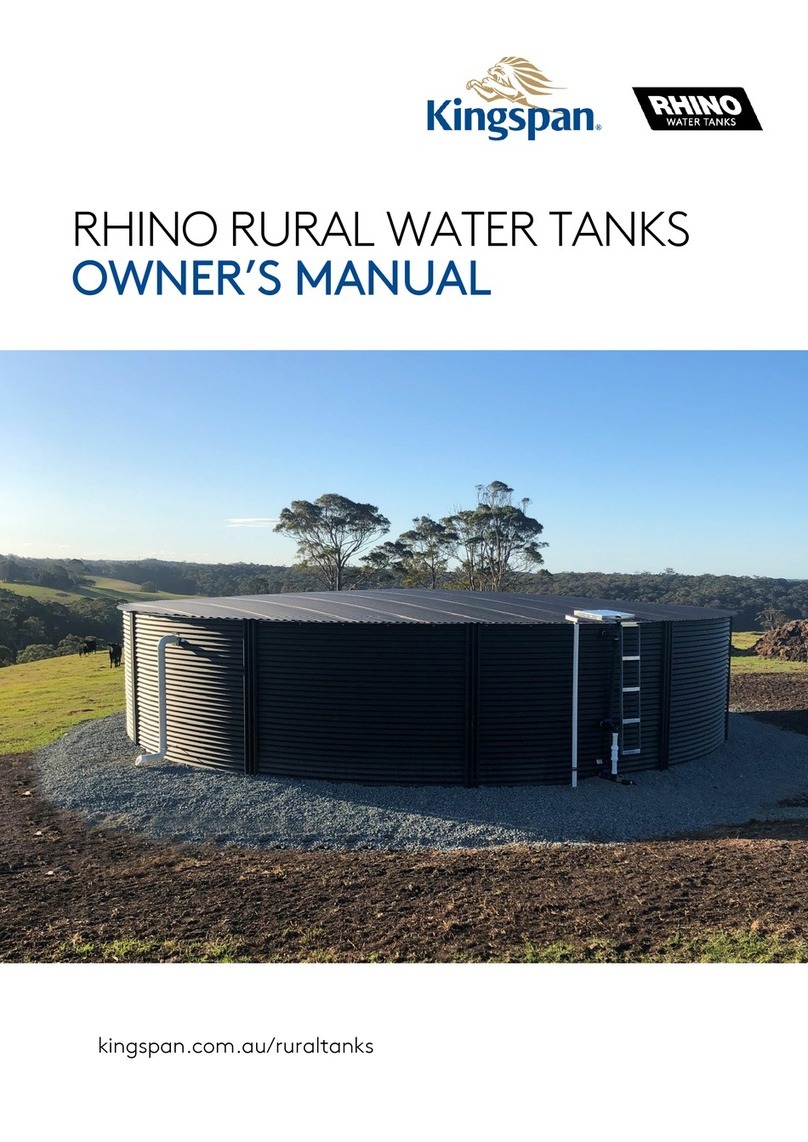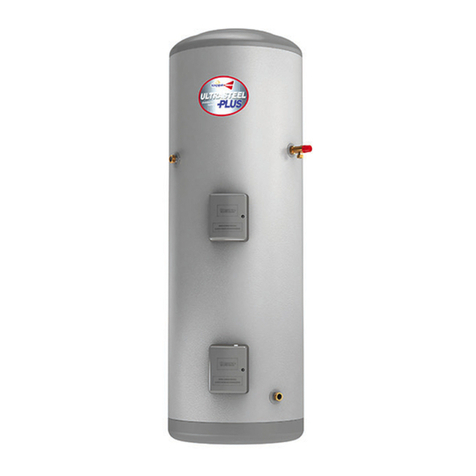
Installation & Maintenance Instructions for an unvented
hot water cylinder with internal thermal expansion
Hot Water Energy Storage
Unvented Cylinder
SEPT 2018 7
BALANCED COLD CONNECTION
If there are to be showers, bidets or monobloc taps in the
installation then a balanced cold supply is necessary. There is
a 22mm balanced connection on the inlet set.
HOT WATER PIPEWORK
in 22mm. This can be reduced to 15mm and 10mm as
appropriate for the type of tap etc. Your aim should be
practical minimum so that the time taken for the hot water
is as quick as possible. Where monobloc mixing taps and
showers are used, these should be installed to comply with
the Water Supply (Water Fittings) Regulations 1999. If these
devices are supplied with un-balanced supplies there should
be single check valves installed at both inlets, to stop over
pressurising of either supply.
PRIMARY COIL CONNECTIONS FOR INDIRECT UNITS
For Solar input models refer to pages 11-12 before making any
connections.
Connect the primary connections (Indirect only) using the
compression connections provided. The primary circuit must
be positively pumped. Gravity circulation is not suitable.
open vented or sealed, with up to a maximum pressure of
oC. If you seal the
primary circuit an additional expansion vessel and safety
valve is required. The boiler may be Gas, Electric or Oil but
heat sources such as some AGA’s, back boilers, solid fuel
stoves, etc. are NOT SUITABLE. Please contact our Technical
department for guidance. Connect the two port zone valve (
After commisioning and checking pipe connections insulate
all pipe work with pipe insulation material. Insulate discharge
pipe work and temperature and pressure relief valve ensuring
access to the release knob and view of tundish is not blocked.
SECONDARY CIRCULATION
The unvented cylinder can be used with secondary
circulation. An appropriate WRAS approved bronze circulator
should be used in conjunction with a non-return valve to
On large secondary circulation systems it may be necessary
to incorporate an extra expansion vessel into the circuit
to accommodate the increased system water volume.
Secondary circulation should be avoided on Direct electrically
300 ltr units. On smaller sizes, tee into the cold feed pipe
above the drain.
IMMERSION HEATERS
The immersion heater is supplied with remotely mounted
thermostat within the heater enclosure. The thermostat
switches both live and neutral and comprises an adjustable
control and a high limit manually resettable thermal cut-out.
All thermostat connections and probe mounts are factory
The electrical supply to each immersion heater must be
fused at 13A via a double pole isolating switch to BS 60335.
The cable must be 1.5mm23 core heat resistant (85°C HOFR)
the immersion heater/s until the unit is full of water. Do not
operate the immersion heater/s if any sterilisation liquid
is in the cylinder as this will cause premature failure. Each
immersion heater must be earthed.
Remove the thermostat cover by removing the retaining
screw, opening the cover and sliding it to the left to
disengage from the retaining clamps.
Connect to the terminal block ensuring the outer sheath is
clamped and the cables are secured without strain on any of
the components or cables.
ELECTRICAL CONNECTIONS
Warning: This appliance must be earthed and all wiring
should be completed by a competent electrician in
accordance with the latest I.E.E wiring regulations
Complete the wiring – use the appropriate wiring diagrams
on page 13 - 15.
disconnection from the supply mains having a contact
separation in all poles that provide full disconnection under
overvoltage category III, the instructions state that means
accordance with the wiring rules


































